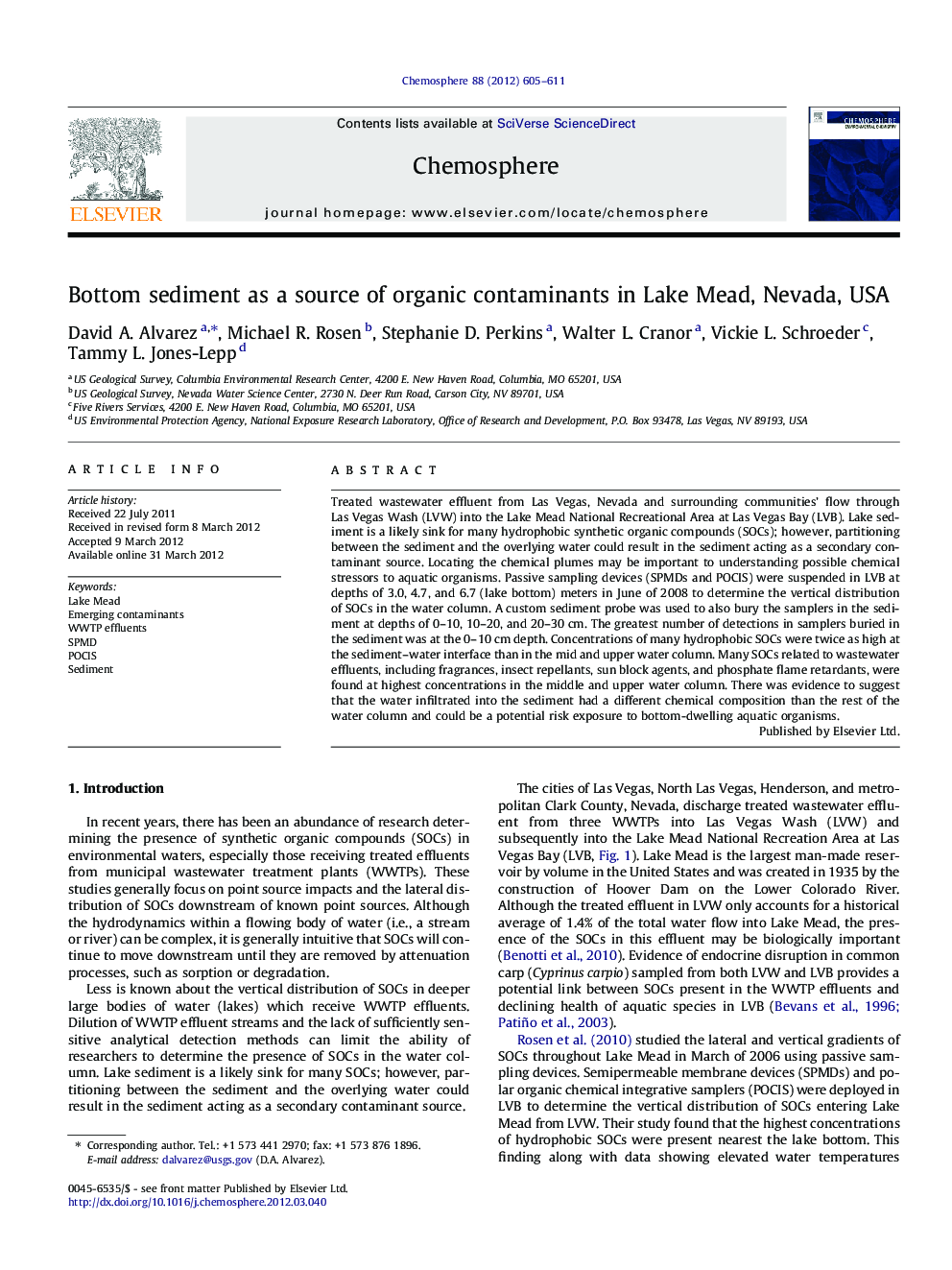| کد مقاله | کد نشریه | سال انتشار | مقاله انگلیسی | نسخه تمام متن |
|---|---|---|---|---|
| 4410308 | 1307538 | 2012 | 7 صفحه PDF | دانلود رایگان |

Treated wastewater effluent from Las Vegas, Nevada and surrounding communities’ flow through Las Vegas Wash (LVW) into the Lake Mead National Recreational Area at Las Vegas Bay (LVB). Lake sediment is a likely sink for many hydrophobic synthetic organic compounds (SOCs); however, partitioning between the sediment and the overlying water could result in the sediment acting as a secondary contaminant source. Locating the chemical plumes may be important to understanding possible chemical stressors to aquatic organisms. Passive sampling devices (SPMDs and POCIS) were suspended in LVB at depths of 3.0, 4.7, and 6.7 (lake bottom) meters in June of 2008 to determine the vertical distribution of SOCs in the water column. A custom sediment probe was used to also bury the samplers in the sediment at depths of 0–10, 10–20, and 20–30 cm. The greatest number of detections in samplers buried in the sediment was at the 0–10 cm depth. Concentrations of many hydrophobic SOCs were twice as high at the sediment–water interface than in the mid and upper water column. Many SOCs related to wastewater effluents, including fragrances, insect repellants, sun block agents, and phosphate flame retardants, were found at highest concentrations in the middle and upper water column. There was evidence to suggest that the water infiltrated into the sediment had a different chemical composition than the rest of the water column and could be a potential risk exposure to bottom-dwelling aquatic organisms.
► A custom sediment sampler was developed to sample sediment infiltrated water.
► Sediments may act as a source of organic chemicals to aquatic biota.
► SPMDs and POCIS were used to determine the vertical distribution of chemicals.
► Chemicals from WWTP effluents remained in the upper layer of the lake.
Journal: Chemosphere - Volume 88, Issue 5, July 2012, Pages 605–611